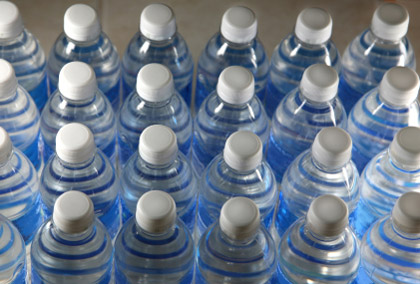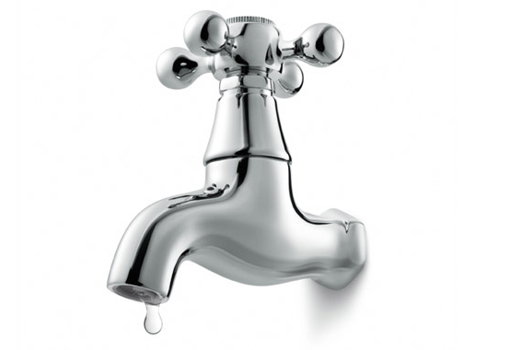Education & Innovation Promoting Public/Private Water Solutions
The 2010 Federal Buildings Personnel Training Act (FBPTA) is a far-reaching measure that seeks to assure Federal buildings and property are managed with a priority on energy and water-efficient practices. As such, the General Services Administration (GSA) is identifying core competencies, which all Federal buildings personnel must possess to operate and manage government facilities. The FBPTA also applies to government contractors working on operations and maintenance. Assisting GSA in formulating the core competency analyses are several trade associations, including the International Association of Plumbing & Mechanical Officials (IAPMO), a global leader in plumbing education, codes and standards. The Federal training act requires GSA to work with industry officials and universities to create comprehensive continuing education courses in energy, water efficiency and building performance leading to certificate programs or other measures of competency.
“IAPMO is concentrating on course development in the water area not only because water efficiency is critical but also because combined energy/water courses put too much emphasis on energy at the expense of maximum water efficiency,” says G.P. Russ Chaney, chief executive officer of the IAPMO Group. “We will create Certified Water Manager and Certified Water Auditor programs that complement for Federal buildings personnel what contractors, inspectors, and plumbing designers are already doing in private enterprise.”
Federal Water Management
Many regions of the United States will be facing critical water shortages in the coming years, and thousands of Federal buildings in those areas will be impacted as well. Kate McMordie-Stoughton, a water resources engineer specializing in Federal water management with the Pacific National Northwest Laboratory, explains, “The Federal government is leading by example in water efficiency, thus striving for large reductions in water use. These reductions have been spurred in part by President Obama’s Executive Order 13514 and by a previous Executive Order under President Bush (EO 03423).” McMordie-Stoughton says agencies are to develop comprehensive sustainability plans and to incorporate water efficiency in the following areas:
- Reduce potable water use intensity 2 percent annually through fiscal year 2020 or 26 percent by fiscal year-end 2020, relative to a 2007 fiscal year baseline. Water use intensity is defined as gallons per square foot of facility space.
- Reduce agency industrial, landscaping and agricultural water consumption 2 percent annually or 20 percent by fiscal year-end 2020, relative to a 2010 fiscal year baseline.
- Identify, promote and implement water reuse strategies consistent with state law, which reduce potable water consumption. Federal agencies are encouraged to find innovative ways to capture water from processes and to use this water as an alternate water source.
- Implement and achieve objectives identified in stormwater management guidance issued by the Environmental Protection Agency (EPA). Federal agencies are required to implement sustainable stormwater management for all new construction projects.
Federal agencies are also mandated to perform comprehensive water evaluations and to implement cost-effective efficiency measures as part of the Energy Independence and Security Act of 2007. More information is available through the Federal Energy Management Program Water Efficiency Website at http://www1.eere.energy.gov/femp/program/waterefficiency.html.
Key Professional Associations
The obvious way to reach these conservation goals is to equip public and private sector employees with tools to effectively manage facilities with a practiced eye for water-efficiency.

© iStockphoto.com/MarinaGold
In the energy efficiency area, the Association for Facilities Engineering (AFE) and the Association of Energy Engineers (AEE) are working together to produce a curriculum of energy management tools for facilities managers with continuing education credits.
In formulation of Certified Water Manager and Certified Water Auditor courses, IAPMO will draw heavily from its well-known GreenPlumbers educational courses and its Uniform Plumbing Code® (UPC) and Green Plumbing and Mechanical Code Supplement (GPMCS).
IAPMO acquired the GreenPlumbers Training & Accreditation Program in early 2011. Prior to this, GreenPlumbers had trained more than 8,000 plumbers in 40 states within four years of operation. Originated in 2001by the Master Plumbers & Mechanical Services Association of Australia, GreenPlumbers was a response to government requests for innovative water efficiency programs.
Partially due to GreenPlumbers training and conservation incentives provided by the Australian government, cities on their eastern seaboard were able to reduce water use by up to 50 percent. Prior to the Australian program, plumbers were not considered champions of conservation. In fact, a disconnect has always existed – both in Australia and in the United States – between those working the “street side of the meter” (water utilities) and those on the “property side” (plumbers). However, in any effective water efficiency scenarios, partnerships between the two stakeholders are critical for success.
Urban Dams: Water Efficiency & Users
When one thinks of a “dam,” the image of a concrete barrier holding back billions of gallons of water immediately comes to mind. However, Webster’s dictionary has a much simpler definition: “. . . any barrier that checks the flow of a stream.”
In the United States, streams of water flow through houses and businesses every day. Allowing these streams to go unmonitored is a careless waste of one of the world’s most precious resources. Many devices are under development to help consumers and businesses monitor these water flows, thus assisting in reducing water usage through behavioral change and use of more advanced water fixtures.
GreenPlumbers’ Urban Dam Project assists with residential and commercial water and energy savings through a comprehensive approach that includes identification of residential water and energy savings goals – house by house – and a 3-Phase implementation plan. The plan’s 50-point audit (Phase One) identifies immediate savings through appliance and fixture change-outs. This is complemented with return-on-investment (ROI) calculations for costs vs. water, energy and sewer savings (Phase Two). Phase Three is a master plan for identifying the most effective alternative technologies – solar, grey water, rainwater, geothermal – given the geographic and topographical location, and their potential total savings.
Water Usage Calculations
Consumers with a monthly or bi-monthly water bill don’t need a plumber to calculate water usage since the figures are right on their bill. However, most users, who have never calculated how many gallons of water they utilize in an average day, will probably be surprised. Water bills are usually figured in units used, with one unit equal to 100 cubic feet (CCF). Figure total number of gallons by multiply units times 748.052 (number of gallons in 100 cubic feet). Some bills are tiered with rates for “excessive” water use increasing as water use increases.
As an example, the author’s water bill in Southern California is charged via 10 units in tier one at $1.43 per unit or $14.30. This means the author and his wife use 7,480.52 gallons of water in tier one. If they stopped there, they would be using an average of 62.34 gallons per day per each person within 60 days, which is well below the national average. Unfortunately, their billing does not stop there; they progress through 30 more units of tier two and one additional unit in tier three. Ultimately, they use 30,670 gallons of water per billing cycle or more than 255 gallons a day per person, which is substantially more than the national average of 147 gallons per person per day.

© iStockphoto.com/switas
Their water is not too expensive, but this is winter. What will their water bill be in summer?
The first mistake may be water companies’ putting water use in terms of units, which disguises the fact that one unit is actually 748.052 gallons of water. The author is averaging 255 gallons per day, which is only one-third of one unit of water per day. But, in terms of a more understandable context, he is using 2,040 bottles of water per day just for himself. It is a good thing that consumers don’t have to pay for water at bottled water prices, but maybe thinking of it in those terms will help users gain some perspective.
Water Behavior Audits
Auditing water use is a good starting point for changing water-use behavior. Secondly, if the fixtures are not leaking, make a list of which ones are water-wasters, such as those old 10-gallon per minute showerheads. New showerheads excel at 1.5 and 2.0 gallons per minute. New high-efficient clothes washers save as much as 30 gallons of water per each load of laundry. And, water-efficient dishwashers are at least 50 percent more efficient when compared to older styles.
One very effective way to reduce overall water use without much effort is to check water pressure. If water pressure is between 65-80 or more pounds per square inch, adding a pressure regulator valve (PRV) can make a big difference and also help prevent damage to plumbing pipes and fixtures. Water use can decrease by as much as 20 percent just by reducing water pressure from 75 to 50 psi. Reducing pressure to a home can reduce water use every time the water is turned on, particularly when watering lawns and gardens. Water pressure from 45-55 psi is sufficient for most plumbing fixtures.
After figuring a daily water use average, the next step is to separate indoor from outdoor use. This is easily done in a climate where one can turn off his/her outdoor sprinkler system during the winter. Check the water bill for a period with no outdoor watering and that should represent average indoor use. Indoor use may be somewhat higher in winter because some people have a tendency to indulge in hotter, longer showers when the weather is colder. Another way to figure indoor use, if the water meter is accessible, is to take a reading on one day and then another reading a few days later at the same time, making sure not to do any outdoor watering during that time. Average daily use is the number of cubic feet times 7.48052 = number of gallons divided by number of days since the last reading.
Checking the water meter is also a good way to determine if any system leaks exist, which cost money. Make sure all water is turned off and then read the meter. Check it again in a few hours. If the meter has advanced, a leak is somewhere.
Smart Water Meters
Many houses now have electric smart meters that give hour-by-hour usage information. This allows electric utilities, as well as consumers, to identify usage patterns and to make appropriate changes, which will save money and energy. Smart meters are already available for water use in some areas, thus potentially impacting water behavior significantly. For instance, being able to see the effect of the timing and output of outdoor watering systems will be a tremendous guide in helping people consider options for more effective and efficient lawn maintenance





























